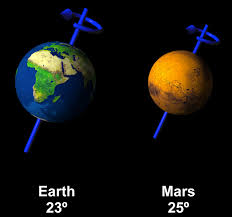THE USM SOUTHWORTH PLANETARIUM
70 Falmouth Street Portland, Maine 04103
43.6667° N 70.2667° W
Altitude: 10 feet below sea level
Founded January 1970
Julian date: 2458654.5
"Don't fear to be eccentric in opinion, for every opinion now accepted was once eccentric."
-Bertrand Russell
THE DAILY ASTRONOMER
Thursday, June 20, 2019
Solstice Pandora
The last day of astronomical spring!
At 11:54 a.m. EDT June 21, 2019, astronomical summer will begin. Prior to summer's arrival. we wanted to address some questions people have asked about solstices in general and the summer solstice in particular. For these questions, we need only seek out the parchment papers contained within Pandora's Jar.
"Is it true that we're actually farthest from the Sun on the summer solstice?"
-K.S, Naples
Not exactly. We're farthest from the Sun (at aphelion) around July 4th. Earth revolves around the Sun along an elliptical path that is slightly elongated. Consequently, as Earth moves around this orbit, it will attain its point of least distance (perihelion) and that of greatest distance (aphelion.) Earth's aphelion distance is 94.5 million miles and its perihelion distance is 91.5 million miles. Earth reaches aphelion about two weeks after the June (summer) solstice.
Earth's orbital path is a slightly elongated ellipse. As Earth moves around the Sun, it reaches its point of least distance (perihelion) six months before reaching its point of greatest distance (aphelion.)
"Will the Sun be overhead on the Equator during each solstice?"
-K.F., Portland
The Sun passes overhead on the Equator during each equinox. On the summer solstice, the Sun passes overhead at the Tropic of Cancer (23.5 degrees N latitude.) The Sun passes overhead at the Tropic of Capricorn (23.5 degrees S) on the December (winter) solstice. Earth' tilt, or obliquity, measures 23.5 degrees, hence the latitude values of the two tropics. If Earth's obliquity were 43.5 degrees, the Tropic of Cancer would intersect Portland, ME, and the Sun would be overhead here on the summer solstice. We can dream...
"Do other planets have solstices?"
-B.F, Biddeford
Yes. If the planet is titled, it will experience solstices: times when the Sun reaches its highest and lowest points in both hemispheres. The time separating successive solstices will be greater on more distant planets where the years are longer. For instance, the next summer solstice for the Martian northern hemisphere occurs on October 8, 2019. The following Martian northern hemisphere solstice happens on August 25, 2021.
Any planet that is tilted on its axis will
experience solstices, those times when
the Sun attains it lowest and highest points.
The next Martian Northern Hemisphere solstice
occurs on October 8, 2019. Note that the Martian
tilt, or obliquity, is only slightly larger than Earth's.
"I know that the Sun's solstice position shifted from Gemini into Taurus because of Earth's slow wobble. Does that mean that the dare of the solstice will change, too?" -C.C. Windham
The Gregorian calendar replaced the Julian calendar so as to prevent the seasonal date shifting you mentioned. Such seasonal date displacement occurred in the Julian calendar because of the discrepancy between the year length on the calendar and the actual time period Earth requires to complete an orbit around the Sun. The Julian calendar did impose a leap year every four years to create a year length of 365.25 days. However, as the year's length is closer to 365.2422 days, the vernal equinox(first day of spring) slowly shifted relative to March 21st, the equinox date that the ecclesiastical authorities invariably recognize. By the time of the Gregorian reform, the vernal equinox fell around March 11th. The reform eliminated eleven days to reset the equinox on March 21st and then imposed new rules relative to leap years:
An extra day is inserted into every year equally divisible by four except for century years, unless those century years are equally divisible by 400. So, 1600 and 2000 were both leap years. 1700, 1800, and 1900 were not. This new Gregorian calendar is much more accurate than its Julian predecessor. However, owing to a 27 second annual discrepancy, the calendar will be off by about 1 day every 3260 years. However, even as seasonal points migrate along the ecliptic, the dates of the seasons will remain comfortingly consistent.


